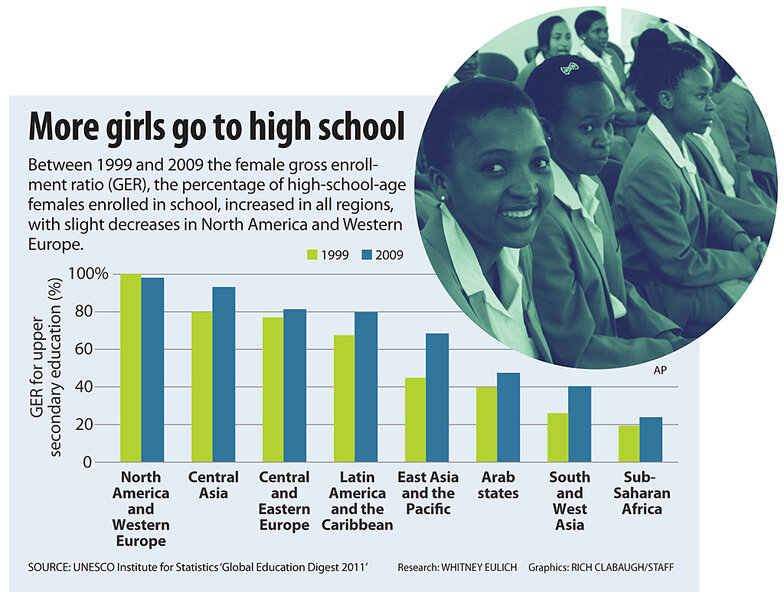State of the world: Global gender gap narrows
Loading...
| Washington
Ten years ago, life was still hard for the women of Ijuhanyondo village in Tanzania.
"Women were very behind. They used to be only at home doing housework," a resident named Baruani told a World Bank researcher this year.
But much has changed in the intervening decade. Many Ijuhanyondo women now run their own business and have cash for themselves. In the old days men did not allow women to participate in politics; now females make up half the members of the street committee that runs the village.
Things are far from perfect – most Ijuhanyondo homes do not have piped-in water. Men still get drunk and beat their wives. Parents still favor sons when it comes to passing along family possessions.
Overall, though, said a villager named Agnetha, "we do not depend on men as it used to be."
As goes Ijuhanyondo, perhaps so goes the evolution of gender equality across the world. Things have changed for the better, particularly in developing nations, at a pace that would have been unthinkable as recently as the 1970s, according to a 2012 World Bank report on the subject.
"In four major areas – women's rights, education, health, and labor force outcomes – the gains in the second half of the 20th century were large and fast in many parts of the world," says the World Bank's "Gender Equality and Development" report.
Consider the gains made on formal rights and constitutional guarantees of equality. In 2003, the African Union adopted a protocol on women's rights, dubbed the "Maputo Protocol." Of the 53 African nations, 46 have now signed this protocol, which asserts women's rights to political participation and social equality, among other things. Thirty signees have ratified it.
In 1994 all Latin American nations signed an Organization of American States convention on the prevention of violence against women. Since then, 28 of these countries have passed their own laws establishing punishments for domestic abuse.
Today, Saudi Arabia remains the only nation that formally restricts women's right to vote. The Philippines has made sweeping legislative changes recognizing women's rights across a wide spectrum of law. Morocco overhauled its family code in 2004 to better recognize equality between the genders.
In education, the world has just about reached gender parity in primary school enrollment, according to the World Bank. Even those regions that lag in this area are making progress – in sub-Saharan Africa, the girl-boy ratio in primary school was 91 to 100 in 2008, up from 85 to 100 in 1999. In secondary schools, girls outnumber boys in roughly one-third of developing nations. At the university level, more women than men are enrolled worldwide.
"This increase in female enrollment is consistent with an increasing demand for 'brain' rather than 'brawn' jobs in a globalizing world," notes the World Bank gender report.
As for health, the life expectancy for women has risen from 54 in 1960 to 71 in 2008. That's slightly more than it has gone up for men. Recent decades have also seen the fastest-ever decline in fertility, from 5 births per woman in 1960 to about 2.5 in 1980. This allows families to concentrate resources on fewer kids and gives women more opportunity to enter the workforce. Indeed, the gender gap in labor force participation has steadily narrowed. Between 1980 and 2008, the percentage of women working outside the home has risen from 50.2 to 51.8. The corresponding figure for men has fallen, from 82 percent to 77 percent.
Of course, there's still a long way to go in regard to gender equality. Worldwide, women still spend much more time on domestic work than men. They make less money than men for doing equivalent work. And in some nations, such as India and China, there is the problem of what the World Bank calls "girls missing at birth," a decline in female infants caused by parental preference for boys, the advent of gender-determining pre-natal medical tests, and access to abortion.





